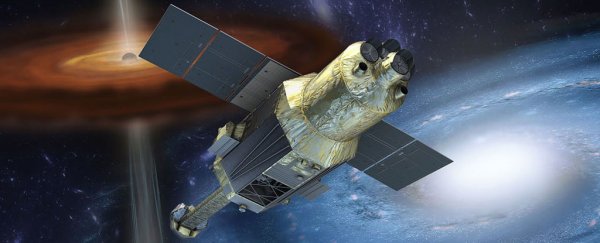The Japan Aerospace Exploration Agency (JAXA) is at a loss to explain what's happened to its Hitomi satellite, with fears that the spacecraft might have disintegrated in space.
The space agency acknowledged that it had lost contact with the satellite on Saturday, with an unexplained anomaly preventing JAXA from communicating with the craft. After assembling an emergency team to try to restore communication channels with Hitomi, the space agency said it's still not able to determine the state of the satellite.
However, according to a 'breakup' analysis from the US Joint Space Operations Centre on March 26, the satellite appeared to have separated into five pieces. The Japanese space agency has said it will be observing the objects, using a radar at the Kamisaibara Space Guard Centre (KSGC) and telescopes at the Bisei Space Guard Centre (BSGC).
While JAXA is still trying to recover communications with the satellite, nobody is any clearer to understanding exactly what caused Hitomi to come apart.
It's a very sad (and expensive) development for the Japanese space program, which launched the satellite, then called ASTRO-H, only a little over a month ago on February 17. Hitomi is (or was) equipped with X-ray telescopes and gamma ray detectors, and had been designed to study galaxy clusters, supermassive black holes, and neutron stars.
According to astronomer Jonathan McDowell from the Harvard-Smithsonian Centre for Astrophysics, who works with the Chandra space observatory, it's possible Hitomi suffered some kind of "energetic event", such as a gas leak or battery explosion, that could have made the craft veer off course and possibly come apart.
If this hypothesis is correct, it's possible that the antenna is not pointed in the right direction, which could be preventing communications with JAXA. Worse, if control over the satellite cannot be regained, the solar-powered Hitomi may not be able to position its solar panels to pick up light from the Sun, meaning it could lose all power before efforts can be made to make repairs.
But according to another satellite expert, Goh Cher Hiang from the National University of Singapore, dramatic events such as battery explosions or gas leaks are extremely rare, meaning there's also the possibility that external factors, like small pieces of space junk, have to be considered.
"It could also be from a collision with something in space, either from outer space or a man-made object already in space," he told Simeon Paterson at the BBC.
Amateur footage of what could be Hitomi tumbling through space has been uploaded to YouTube (see below), although it's not entirely clear if the object seen in the grainy footage is indeed the Japanese spacecraft.
While JAXA is searching for answers and looking into ways to restore communications with the satellite, not all hope is lost. The Japanese space agency has previously regained control of another drifting probe called Akatsuki, which lost communications back in 2010 after a signal blackout.
It wouldn't just be a loss for Japan, either. The satellite was built in conjunction with NASA, the Canadian Space Agency, and the European Space Agency, so science lovers and taxpayers around the world have all got a lot riding on this. Our fingers are crossed for a positive outcome, although right now, things aren't looking great.
